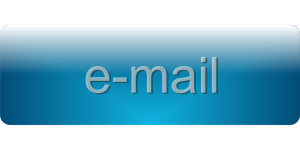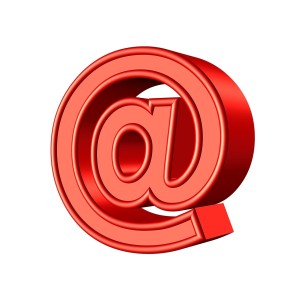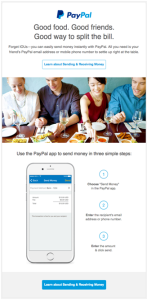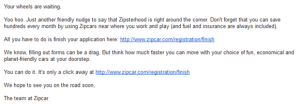How To Brainstorm Your Email Marketing Strategy

You can’t just create an email campaign and run with it. This strategy creates a very poor return on your efforts and the disjointed campaign would likely lose you subscribers as well as revenue. Instead, you need to develop a long-term plan that can give you, your campaigns and subscribers direction.
But how do you brainstorm an email marketing strategy? Here are some important steps in the development of campaigns you need to follow in order to get the best results.
1. Look At What Is Important For Your Business To Sell
The first thing to look at is what is important for your business to sell. Is there a product that performs better than others, especially online or via email? This is important because you need to know what direction you want to take your campaigns in.
You also need to know the price point and the main customer demographics. This information can determine how many touchpoints you need to create a sale. Generally speaking, the higher the ticket price for the product, the longer the campaign you need.
Research has also found that 50% of online sales take between five and twelve touchpoints to create a sale.
2. Determine What Points You Want To Get Across In Your Sales Pitch
When it comes to selling, you need to convince customers about the benefits of your solutions and the potential to solve pain points with the customers. This means you need to consider your product’s main users and what pain points they have and how your product can help them.
This creates you a long list of points that you want to get across with your email marketing campaign. These should be listed down and developed into stories. You can use current customer testimonials as a way to demonstrate your points.
3. Think About The Sales Process
Next you need to know more about your sales process and how your email marketing will fit into that process. For instance, will your emails lead directly to a product page that your subscribers can purchase from? Or do you need a way to qualify subscribers for purchasing that can be used by sales teams to complete sales?
When you’re building an email marketing campaign, this is an important point. Setting your campaign the right way will mean better results and less wasted time for both you and your customers.
4. Develop Timings For Your Campaigns
The next most important part of the brainstorming session is to develop timings for your campaigns. Your audience is always going to be different from another brands. Therefore, you should not read too much into when customers are online for your business.
However that doesn’t mean that your company doesn’t have an ideal time to send out campaigns. You need to know this. And you also need to determine how frequently you should be sending content to your audience. Too often, and you can alienate your subscribers and reduce the number on the list, while too few emails can mean that potential customers forget about your branding.
5. Sit Down With A Team And Develop Content
Don’t let emails be developed on the fly. Create a pre-constructed campaign that lasts a long time. This could be an auto-responder list or just a standard campaign you’re prepared. What is important is that several people contribute. It allows for greater depths of creativity and better results when those with different opinions work together on marketing campaigns.
At the same time, you can be sure that everyone knows what is going on, so they aren’t surprised when campaigns do go out.
Conclusion
Build your next campaign in advance and start with a brainstorming session. These tips will help you get the most out of your campaign and see revenue and profit growth.
Do you brainstorm email marketing campaigns? What tips do you have?
Let us know in the comments below.
Read post Post a Comment. Tagged in: campaign success, email campaigns, email marketing campaigns
The Easiest Formula For Setting Out Your Email

Email marketing is one of the best ways to sell online. Research has found time and time again that the return on investment from email marketing is much higher than other digital marketing pathways. However, there are lots of different ways that you can utilise email in your marketing, and there are some that are easier to operate than others.
Using certain formulas for email marketing, you can achieve more than the average brand. Here is one of the easiest formulas that you can use to generate revenue through email marketing.
The Auto-Sequence
The Auto-sequence is a series of emails that are automatically sent to customers based on behaviours or conditions that you’ve preset. For instance, some brands create an auto-sequence that is related to the subscribers birthday, anniversary or time on an email list. These are pre-written and fully automated, so that you, as the business owner, have limited involvement once set up.
This is what makes it the easiest formula for setting out your email. All you have to do is to create a series of emails that are ready to go. When certain conditions are met, the emails are sent out. You can just look at the results in your dashboard or when sales have been made through your store.
However, even with an auto-sequence, you need to generate a design that looks great to audiences whether the audience is using a desktop or mobile device. So you also need a good design.
Designing Your Email
The simplest email design is often the easiest. So, here is our quick list of suggestions of what to include in your email marketing design.
Headline
The first thing you need to include is a headline. This should be attention grabbing and can be similar to your subject line. However, it is often best to have a slight adjustment, for instance going into a little more detail or being more personalised. However, personalisation in the email subject line is what gets your emails opened.
An Image
Next you need an image. Images help to covey messages quicker to audiences. The same message can be displayed in one image as can be in a thousand words. They also increase interest, engagement and conversions within an email.
Images can be added so they include text within them, and an image in an email should not be too large. Most inboxes don’t support images that are more than 600 pixels wide, so it is best to keep them under this and below 400 pixels wide.
Text
The next stage should be detailing your message. This should be a short message of less than 200 words. This prevents audiences from becoming bored and allows for easy read on a mobile device. It is better to keep to one strong message and connect to a landing page that has more details on it rather than bore people on your emails.
Your text should contain limited spam words as this can be off-putting and lower response rates to your email.
Video (Optional)
Here you can place a video that is hosted from YouTube or another video sharing website. This is optional and doesn’t need to be done, but videos can help with email conversions.
Call To Action
Finally, you want to place a call to action. This should direct the customer to make a purchase or take another positive action. Call to actions need to stand out on a page and should include as little text as possible. Remember to always give ownership to the reader and add urgency to all email call to actions.
Conclusion
With the tips above, you have a simple, effective and easy formula for running your email marketing campaigns. They will help to generate revenue from your campaigns with you not having to do too much work.
How do you design your campaigns? How do you design your emails?
Let us know in the comments below.
Read post Post a Comment. Tagged in: email campaigns, email design
Why Your Marketing Emails Need Less Marketing Content

Adding media can help reduce the amount of content needed on an email and improve ROI on campaigns
Emails are the perfect channel to get your sales message across. They are easy for audiences to digest, they can sit in inboxes until the subscriber is ready, and you can track results. All these reasons make emails one of the best performing digital channels for ROI.
However, one of the biggest mistakes that small businesses make when they’re creating emails is to put too much content in the copy.
Email design and content can be pivotal in making a campaign a success or failure. And while some small business owners might think that more is better – audiences tend to prefer the opposite. In fact, emails with too much content can lead to poor sales and high unsubscribe rates.
But why might audiences not like too much content in an email? Here are some of the top reasons, and how you can turn it around without losing any of the power of email marketing.
1. Audiences Have Little Time To Read Too Much Content
One of the biggest reasons is that too much text takes time to read and audiences don’t want to spend hours reading. They want to know what’s important, quickly, and what they need to do next to solve a problem, find out more information, or learn something new.
There are several ways you make it easier to get a message across. Firstly, you can break up long pieces of text into little sections with clear headers explaining what is being said in each section. Audience members with the least time might then skim-read your email, deciding what’s important to them based on the headings.
Another option is to use images to communicate your messages. Images can portray more than words in a given space and can be read and understood faster by audiences. So they make a great option.
2. Audiences Don’t Want Too Much Information
Audiences really only want to know what’s important to them. You might have a great backstory as to why you’re celebrating your business’ five year anniversary, but to your audience, that story isn’t that important. They want to know what the point of the email is: i.e. what’s in it for them.
By all means, write your incredible story, but put it on a landing page for those interested to read it. On your email, be short, clear and very concise. That way you can keep audiences happy and get them to take actions on your emails without losing their interest.
3. Too Much Content Can Seem Pretentious
Audiences don’t want businesses that make themselves seem more than they are. Emails with too much to say make the business sending them look too pretentious. This can lose you trust. Your subscribers will look somewhere else.
Instead, you should be focusing on ensuring your audience feel as if you are all part of one team. They want to know that you see problems from their point of view. Keep your content grounded to ensure you do this, by losing the jargon and not talking too much.
4. Audiences Want To Read Content From A Human
Too much text just looks like a book, something that’s impersonal and not unique to the reader. When you write less text and content, you might find that your audience believe the email was a personal one, something that was developed for them.
This, with other personalisation options for your email, can help you improve your campaign’s success.
Conclusion
Don’t be the business that falls into the trap of having too much information in email campaigns. While you might think you are giving audiences everything they need to make an informed decision, you are more than likely just giving them a reason to unsubscribe.
Be more concise in your email marketing campaigns and see how your success grows. Use images, graphs, videos and other tools to help communicate your message and never write too much.
How do you make emails more concise? Have you ever received an email with too much content?
Let us know in the comments below.
Read post 5 Comments. Tagged in: content design, email campaigns, email content, media content
How The Top 5 Brands Do Their Email Marketing

How can your business learn from the top five email marketing campaigns?
Nothing works better than success, that’s the only certainty in business. You can look at the top five brands and how they do email marketing to discover how they all connect and sell to their audience. If you can learn from their campaigns, you can avoid a lot of mistakes which newbie email marketers tend to make.
So, who are the top brands and how are they creating a storm with their email marketing?
1. Amazon
There’s probably no bigger brand than Amazon. Last year, Amazon achieved sales of $22 trillion. Part of their strategy is to reach out to customers who have abandoned their carts and those who have bought similar items previously. They also send emails to customers who buy products regularly (i.e. ink cartridges).
Sending these emails has three effects:
- It helps to bring back customers who have abandoned carts. This can help to increase revenues significantly.
- It reminds customers about products that need regularly replacing.
- It helps generate additional income by offering products they know past customers should like.
2. Mumsnet
The UK’s largest parenting website provides a great example of marketing automation. They base their automation marketing campaigns on a journey. For example, their pregnancy campaign is set around your due date – you simply enter your due date into their system.
In addition, they have campaigns which are responsive to actions you take on the emails. Therefore, subscribers aren’t receiving irrelevant information.
Things you can learn from Mumsnet:
- Customers are on a journey and you need to match their place on that journey with your email campaigns.
- Automation saves time and is valuable to your audience.
- For more relevance to your audience, you should tie in campaigns to your audience’s actions on previous emails.
3. BuzzFeed
While you might think big brands don’t need automation or big email marketing campaigns you’d be wrong. BuzzFeed is the perfect example. They have one of the highest visitor rates in the world, but they aren’t there just to share cute GIFs. They have very active email lists and campaigns.
They have over 20 newsletters that vary in topic from Health and Beauty, to pets. These email campaigns contribute to about 20% of their monthly traffic, and the average email visitor spends about three more minutes on the site than visitors from other channels.
One of the best examples of newsletters they have is their courses, which are fully automated.
What can you learn?
- Email marketing can contribute to 20% of your traffic.
- Email lists should be designed for the specific needs of your audience with segregation being a significant factor.
4. Grammarly
This is one which all brands should take note of. They didn’t just market their services; they offered social proof by using a fan’s tweet and pairing it with a relevant upgrade offer.
The proof was delivered by an embedded tweet within the email. And everyone knows that social proof is highly trusted by audiences and can help you sell more in the long-term.
What can you learn from Grammarly’s email campaign?
- Social proof in your emails can help build sales.
- You need to monitor social media channels for relevant content relating to your brand.
- Integrating emails with social media can be powerful.
5. Canva
Most of Canva’s services are free; they only have a small percentage of paid services. While their services are good, so are their emails.
They keep information and the design minimal to keep the reader focused. It helps the subscriber to take specific actions depending on the email sent. They also include a lot of whitespaces which increases understanding by about 20%.
Finally, they send emails to users who haven’t been on for a while. This helps them bring back users and subscribers to their services.
What can you learn from Canva?
- Emails can be used to re-engage your audience.
- Emails with less content can perform better.
How Will You Improve Your Campaigns?
If you are looking to improve your business’ email campaigns, there’s no better set of teachers than these companies. The examples above are of the best campaigns that sold and raised awareness.
How will you implement their best tactics in your business? What tactics do you already use?
Let us know in the comments below.
Read post Post a Comment. Tagged in: best campaigns, brand examples, email campaigns
Why Your Email Layouts Are So Important

Have you got your call-to-action button in the right place?
Designing your marketing emails is completely different to designing a website or leaflet for direct mail. Subscribers and audiences react differently to your emails than they do to any other form of content. Get your layout wrong, and your campaign could be completely disregarded.
How Is Email Design Different?
Firstly, subscribers tend to open email campaigns in three stages: envelope, content and landing page. If you fail to optimise your subject line, pre-header text or sender information, then your audience could be dissuaded from opening your email in the first place. To get people to continue reading your email, you will need to design the content so it matches any promises made in the pre-header text. Your landing page will also need to build on those promises as well.
Secondly, you could struggle with the difficulties associated with coding. There are no standards for email coding between inbox providers. As there are ever more inbox providers, there are numerous codes to consider and therefore, getting your emails to display as you intended on all inboxes can be problematic.
Finally, the growth of mobile devices has made it more challenging for businesses to produce email designs that perform well on all devices. Emails are being opened on mobile devices more often than on desktop devices, so a mobile responsive design should be a priority.
Image Implementation Matter
Another consideration is that some email inboxes will automatically block images which can make certain email designs look ugly. A design that isn’t visually appealing will not attract your audience to take the next stage of the sales path.
Another consideration is that if you contain all the content in images, this can reduce the effectiveness of your email campaigns. Also, because there is less speed on mobile devices, campaigns might have very small open rates.
Therefore, while images are important, they should also be used sparingly – when they will be most effective.
Reading Heat-Map
How we read documents on computers and mobile devices is vastly different to how we read documents on paper. While on both sets, the reader is most likely to scan the document first to pick up key points, the reader is likely to see the whole page on a paper document. In contrast, on a digital document, the reader tends to look at what is in the left column and at the top of the page the most.
The bottom section of any page is often disregarded. Another consideration is scrolling. Most readers will not scroll down on a computer to continue reading. Therefore, the majority of the information should be contained above-the-fold.
The call to action button should also be above the fold and to the left of the page to encourage more people to click through.
Top Tips For Email Design
There are many considerations for you when it comes to designing your email. Here are some top tips for you to use in your next email design:
- Ensure all links are obvious on the page.
- Be CAN-SPAM compliant with all the necessary information included in the email.
- Minimise image use and ensure they are optimised for download and quality.
- Always have the call to action and link above the fold.
- Minimise your text. Keep it to below three hundred words.
- Minimise the use of spam words (i.e. free).
- Test your emails on multiple platforms and email clients.
If you follow these design tips, your emails will be more acceptable to your audience, and you will see better results.
What design tips do you have for email? What results do you get?
Let us know in the comments below.
Read post Post a Comment. Tagged in: email campaigns, email design, email success, email templates
5 Things You Can Do To Create The Perfect Email Marketing Teaser Campaign

An email teaser campaign should make the audience feel you are sharing a secret.
Your email marketing list is worth its weight in gold. 77% of customers prefer to receive promotional messages via email but setting up email campaigns can be time-consuming. Research has shown that it can take 5 to 12 interactions with a brand before a consumer is ready to make a purchase. If you are looking to sell a new product via email, that means you could be waiting up to one to three months before any real sales are generated.
That is why using teaser campaigns can be an effective way to speed up the adoption of your new products.
What Is A Teaser Campaign?
A teaser campaign is exactly as it sounds. It is a campaign, delivered via a communications channel to entice customers to get excited about an upcoming event or product. Then, when the product is released, customers are closer to the purchasing decision and more likely to buy early.
Email marketing is one of the better digital channels to use for teaser campaigns because you can monitor results and concentrate on those subscribers that seem interested and also see how the audience reacts.
But email marketing teaser campaigns still require significant planning and forethought to achieve the best results. So here are five things that you can do to create the perfect email marketing teaser campaign.
1. Create A Goal
Simply having a product to promote isn’t going to be enough. You need to ensure that you have a clear goal in mind for your emails. This allows you to have focus and know what to put in each email.
The campaign goals could be:
- To drive traffic to a website.
- Receive (pre)orders for a product.
- Get bookings for an event.
In addition, each email could have a unique goal to help the campaign as a whole. For instance, individual emails could have the following goals:
- Share details on social media.
- Register interest in the event/product.
- (Pre)order the product.
- Visit a landing page.
2. Plan
Before you send the first email, you need to plan your email marketing teaser campaign. Ensure you know the whole story arc. What details do you want to release and when? You can carefully construct the email story on a spreadsheet that contains the message and the action you want the audience to take.
3. Be Mysterious/Secretive
One of the best ways to get people interested is to keep as much as possible a secret. When you are ready to reveal the details, then convey the idea that you are sharing something special with the audience that you haven’t told anyone about yet and is still secret. Being part of an exclusive group makes audiences feel special and more open to your marketing message.
4. Have Four Parts
There are four stages that you want to have for your email marketing teaser campaign. These are:
The Tease – the part that will get the attention of the reader.
Introduction – telling the audience about the product and how it can help them.
Buildup – build excitement for the product/service with the audience.
Conclusion – delivering what the audience expects.
There is no definitive answer for how long your campaign should be. Some could be three or four emails, but the longer a campaign goes on for, the higher the chance that audiences will become bored and unsubscribe.
5. Make Emails Accessible
Test your email marketing messages so you know that they are readable across all the main email platforms and formats. For important headlines and critical content, use text and not images and when you do use images, ensure you have useful content in the alt tags.
Are you running an email marketing teaser campaign? What are you promoting?
Let us know in the comments below.
Read post Post a Comment. Tagged in: email campaigns, presales email, teaser campaign
Great Email Marketing Campaigns
 When it comes to creating your email marketing design and copy, there are many options for you to choose from. So how do you know which is best for your business, audience and objectives? The truth is that testing is the only option for you. However, you could shorten the length of that testing phase by learning what has worked before and implementing their lessons into your campaigns.
When it comes to creating your email marketing design and copy, there are many options for you to choose from. So how do you know which is best for your business, audience and objectives? The truth is that testing is the only option for you. However, you could shorten the length of that testing phase by learning what has worked before and implementing their lessons into your campaigns.
So which have been the best email marketing campaigns and why did they work so well?
1. PayPal

There is a lot about this email which is really appealing. It is clear, concise and provides a simple message that will jog the memories of many audience members. What is really impressive is that they have created an email campaign that is so simple; using many images to portray the main message. You could easily digest the main message in about 10 seconds – use PayPal to help split the bill when eating out.
2. Tory Burch
This email is one of the best on the market because it uses something that few others use – animation. There is a lot of research that shows movement entices the attention of the audience and Tory Burch use movement in this email campaign about a private sale to its maximum potential. What is even more impressive about this email is that it makes you feel as if you’ve been chosen specifically for this offer, a sure winner with their target audience.
3. Zipcar

Have a few people abandoned your site? Then why not take a lesson from Zipcar and re-engage them. This email was sent to non-respondents as a way to encourage them back to the site, while this isn’t uncommon, it is a campaign that deserves special mention. Not only is the copy light-hearted but it carries an important message about the value of the service: it is economical and environmentally friendly.
4. Litmus
Animation again makes our list with Litmus this time. Their use of animation turns what could have been a boring email into something that is fun and entertaining. It should also be noted that the heading of this email is perfect. It informs the audience what they are going to be told. The subheading is also special as it asks a question, engaging the audience.
5. UncommonGoods
There’s lots of advice online about how to create a compelling call to action and nearly every article will tell you that it should have some urgency to it. Well, UncommonGoods certainly listened to that advice when they created this call to action and made sure the audience knew what the value was of taking action immediately.
At the same time, instead of telling the audience what to do, it implies it in a question – making the audience come up with its own conclusion. At the same time it puts pressure on the receiver because it makes them think that they might be in trouble if they don’t get their mother’s gift on-time.
6. JetBlue
JetBlue always delivers. They have a cheeky campaign that is so personable to the audience and really engages them. If you look at their campaigns, everything from their header to the call to action conveys wit and intelligence. What more does the audience want?
Conclusion
There are lots of examples of email marketing campaigns that can help you develop your campaigns to achieve better results. By looking at other campaigns you can redesign your own efforts you can achieve more from your campaigns.
What has been the best campaign you’ve seen in 2015? What campaign style has worked for you?
Let us know in the comments below.
Take action:
- Sign up to large brands to see their campaigns.
- Study the examples above and redesign your own emails to meet the best practices.
Read post Post a Comment. Tagged in: email campaigns, email case studies, email design, email engagement